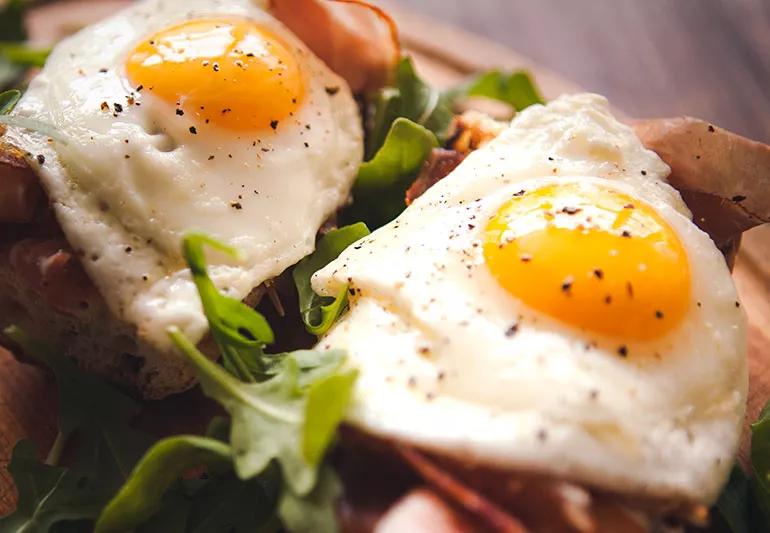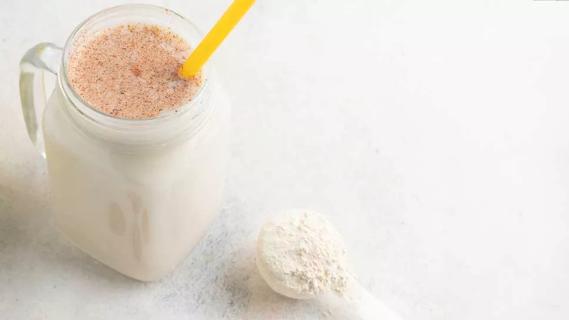Complete proteins contain all of your essential amino acids

You’ve got a lot on your plate when it comes to maintaining a healthy diet. You know it’s important to watch your sugar intake, get enough vitamins and limit processed food. Do you really need to stress about whether you’re eating complete proteins on top of it?
Advertisement
Cleveland Clinic is a non-profit academic medical center. Advertising on our site helps support our mission. We do not endorse non-Cleveland Clinic products or services. Policy
If you’re eating a versatile, healthy diet, the short answer is: Probably not.
But protein is important. Our bodies need protein to form muscle, transport nutrients, and build and repair tissue. So, it’s critical you get enough. But whether it comes from complete sources or incomplete sources isn’t as big of a deal, as long as you’re eating a range of protein-filled foods.
And eating a wide variety of proteins can help ensure you’re getting all the cell-building power you need, notes registered dietitian Gillian Culbertson, RD.
Culbertson breaks down what a complete protein is and how to make sure you can get your fill of protein from a range of foods.
Let’s start at the beginning, with the building blocks of protein: amino acids. Amino acids are organic compounds that your body uses to make proteins. Proteins are essentially a chain of amino acids.
There are 20 different amino acids your body needs, and they each have different functions. For example, the amino acid histidine helps make histamine, which plays a big role in your body’s immune system. The amino acid valine is involved in muscle growth, tissue regeneration and energy production. Tryptophan makes the brain chemical serotonin, which regulates your mood, appetite and sleep.
Advertisement
You get the point. Amino acids make many of our body’s daily functions run smoothly.
Eleven of the 20 amino acids our bodies need are actually produced by your body all by itself, so we don’t need to worry about getting them from our diet. Those are called nonessential amino acids.
The other nine — the so-called essential amino acids — we get through food.
A food is considered a complete protein when it contains all nine essential amino acids that our body can’t produce on its own. By comparison, incomplete proteins contain some, but not all, of the essential amino acids, and in various amounts.
Now, the words “complete protein” and “incomplete protein,” would lead you to believe that “complete” is good and “incomplete” is in some way lacking. And while it’s true that incomplete proteins don’t individually contain all nine essential amino acids, they each bring a little something to the table. So, a healthy combination of incomplete proteins can get you your complete fill of protein.
Complete proteins contain all nine essential amino acids in consistent amounts. Complete protein sources include things like:
While many of the complete proteins are meat-based, incomplete proteins are more vegetarian- and vegan-friendly. They include:
You don’t need to eat complete proteins at every meal to get the body-boosting effects. The goal should be to get a balance of those essential amino acids over the course of the day.
So, if your diet skews more veggie and less meat, no sweat. Even though vegetarian sources of protein are more likely to be incomplete proteins, mixing and matching those protein sources can get you all the amino acids your body needs.
“For people who don’t eat much meat, or no meat at all, a wide variety of plant foods such as legumes, lentils, nuts, seeds and whole grains on a daily basis will allow for you to get the complete proteins you need,” Culbertson says. These foods also provide additional benefits in the form of vitamins and minerals.
Consider these plant-based proteins and their protein content:
Advertisement
A general recommendation for healthy adults is to eat at least 0.36 grams of protein per pound of your body weight each day. So, take your weight and multiply it by 0.36 and that’s how much protein you need, either from complete proteins or a range of incomplete proteins.
But in reality, some people may need more protein on the daily, depending on their activity level and general health, Culbertson says.
The math would say a 160-pound person needs 57.6 grams of protein per day. But if that person runs 20 miles a week and lifts weights three days a week, they’re going to want to take in more. A 160-pound person who gets their exercise from walking around the block a few days a week may need a little less.
And when it comes to protein, timing matters.
“We can only absorb about 25 to 40 grams of protein per sitting, so making sure to space out protein intake throughout the day is important,” Culbertson adds. Going back to our 160-pound person, they would get the most benefit from spacing out their 57.6 grams of protein over two meals.
Unsure how many grams of protein are in your food? Culbertson recommends using your hand as a guide. An appropriate serving of protein is generally about the size of the palm of your hand.
Advertisement
And if you’re worried you’re not getting enough? Try mixing your smoothie with a little protein powder.
“Protein powders usually use combinations of hemp seed protein, pea protein and rice protein, which have higher percentages of all the amino acids we need,” Culbertson says.
If you have questions about your specific protein needs or how to get the right kinds of protein in your diet, talk with a registered dietitian.
Advertisement
Learn more about our editorial process.
Advertisement

Leucine is an amino acid that helps you build muscle — it’s found in both plant and animal protein

Adding protein powder to coffee can provide benefits, but ‘proffee’ is no substitute for nutritious food

While rare in the U.S., signs that you’re not getting enough of this essential macronutrient include muscle loss, skin changes and a weak immune system

The concept of morning protein and exercise isn’t backed by research but may have some potential benefits

Bone broth may help maintain strong bones, improve gut health and even lessen joint pain

The general rule is 0.8 to 1 gram of protein per kilogram of body weight — but that may not be right for you

This edible insect powder can be a good source of protein, fiber and other nutrients

This amino acid is in lots of energy drinks, but our bodies already make all we need

If you’re feeling short of breath, sleep can be tough — propping yourself up or sleeping on your side may help

If you fear the unknown or find yourself needing reassurance often, you may identify with this attachment style

If you’re looking to boost your gut health, it’s better to get fiber from whole foods